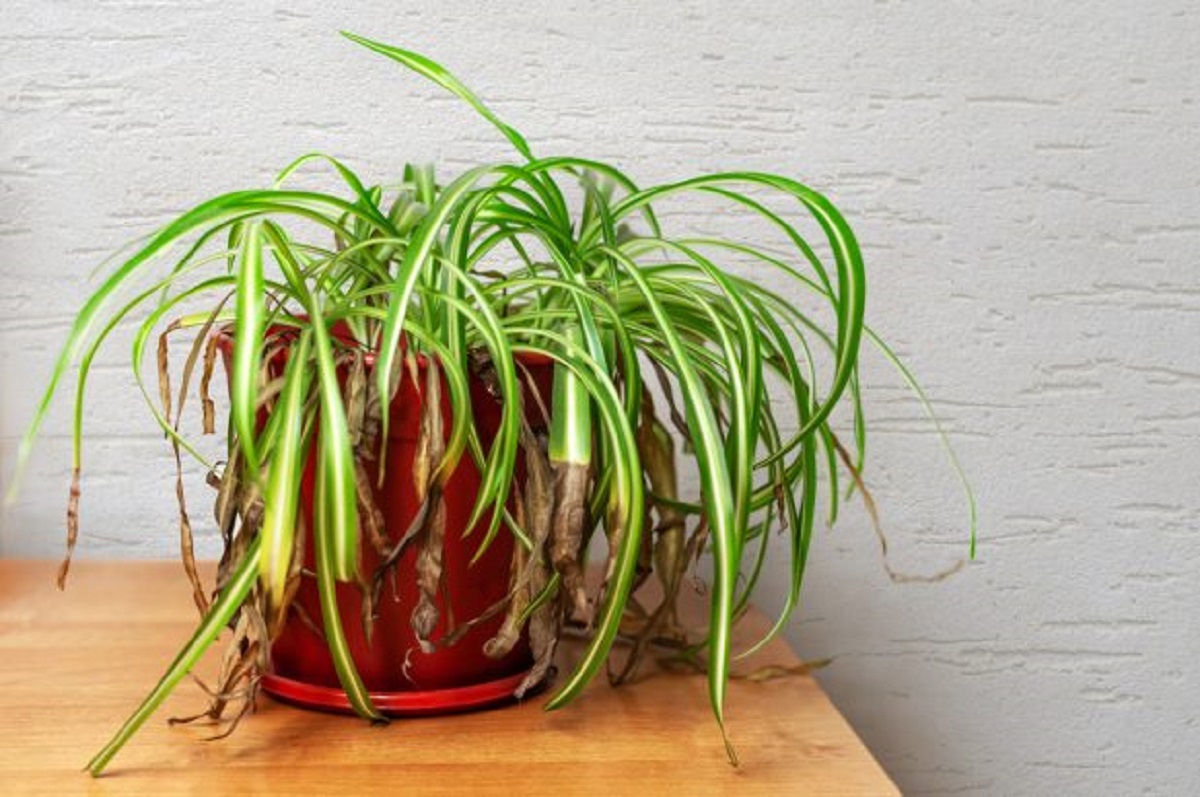Houseplants that suddenly develop brown leaf tips are sending a clear signal: something in their care routine needs a tweak. The most common culprit is dry air, but watering habits, fertilizer salts, and even water quality can play a role. Thankfully, most causes are easy to fix with a few simple adjustments. With the right habits, you can restore lush foliage and keep crisp, brown edges from coming back.
What actually turns tips brown
When indoor heating kicks in, the air’s humidity often drops well below what many tropical plants prefer. Low humidity pulls moisture from leaf margins faster than roots can replace it, so the delicate edges desiccate and turn brown. Plants near radiators or vents are at special risk because warm airflow speeds up transpiration. Some varieties, like calatheas, ferns, and dracaenas, are especially sensitive to dryness.
Another frequent cause is a buildup of salts in the potting mix. Extra fertilizer, hard tap water, or softened water can leave mineral deposits that draw moisture out of root tissues and leaf tips. You might notice a white crust on the soil surface or pot rim—both signs of accumulated minerals. Overwatering and poor drainage compound the problem by stressing roots, while cold drafts and sudden temperature swings can tip sensitive plants over the edge.
“Brown tips are your plant’s way of saying the air is too dry or the roots are stressed—listen, and they’ll recover.”
Quick fixes you can start today
- Move plants away from hot vents and radiators to reduce drying airflow.
- Group plants together to create a shared microclimate of higher humidity.
- Set pots on a pebble tray with water below the pot base to boost local moisture.
- Use distilled, rain, or filtered water if your tap is hard or heavily treated.
- Leach the soil monthly by watering until excess drains freely, flushing out salts and minerals.
- Trim dead tips with clean scissors, following the leaf’s natural shape.
- Water deeply but less often, allowing the top inch of soil to dry between drinks.
- Hold fertilizer in winter; resume light feeding only during active growth in brighter months.
Watering, without guesswork
Correct watering is more about rhythm than rules. Check the soil with a clean finger: if the top inch feels dry, water thoroughly until liquid exits the drainage holes. Empty saucers so roots don’t sit in standing water, which deprives them of oxygen. If the mix stays wet for days, the pot may be too large or the soil too dense; switch to a lighter, well-aerated medium.
Consistency matters more than a strict schedule. Plants drink less in short, dim days and more when light increases in spring and summer. If you struggle to read the soil, a simple moisture meter can add clarity without overcomplicating your routine. Remember that underwatered plants can also show brown tips, but their leaves often feel papery and the soil pulls from the pot sides.
Humidity that actually helps
Many popular houseplants thrive at 45–60% humidity, while heated homes can dip to 25%. A small, cool-mist humidifier placed a few feet from plants can be a game-changer. Run it for a few hours daily, especially in the morning, and clean it weekly to prevent mineral film. If a humidifier isn’t practical, combine pebble trays, plant grouping, and strategic placement away from hot, dry air.
Avoid misting as your primary strategy. It raises humidity only for a few minutes and can spot sensitive leaves. Focus instead on steady, background moisture in the air and stable temperatures.
Soil, repotting, and feeding
Salty, compacted soil makes brown tips more likely. Flush the pot under a gentle stream of water for several minutes, allowing salts to drain from the bottom. Repot every 12–18 months into fresh, well-draining mix, stepping up only one pot size to keep moisture balanced. Fertilize lightly in the growing season with a balanced, diluted formula, and skip feeding in winter when growth slows.
Cosmetic care and prevention
Brown tissue won’t turn green, so trim it away for a cleaner look. Cut just outside the dead area, leaving a slim border of brown to avoid exposing healthy tissue. Wipe leaves gently with a damp cloth to improve light capture and reduce stress. Monitor weekly: if new growth stays clean, your fixes are working; if tips keep browning, revisit humidity, watering, and salts.
With balanced watering, cleaner soil, and kinder air, even finicky plants can stay glossy and green. Small, consistent changes beat drastic measures—and they’ll keep those leaf tips soft, hydrated, and healthy.





